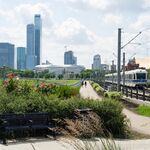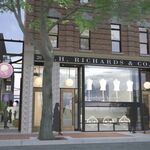Barnaby
Senior Member
I'm fine with new developments further out beyond the Henday, but they should be built within 500m of an LRT station. If that means focusing new developments around exclusively Gorman and Ellerslie, fine. Just use the developer funds to 100% cover the needed extensions. This will allow for sprawl while ensuring expansion of the network to the airport without it being a financial burden. The city needs to operate transportation like a business.




